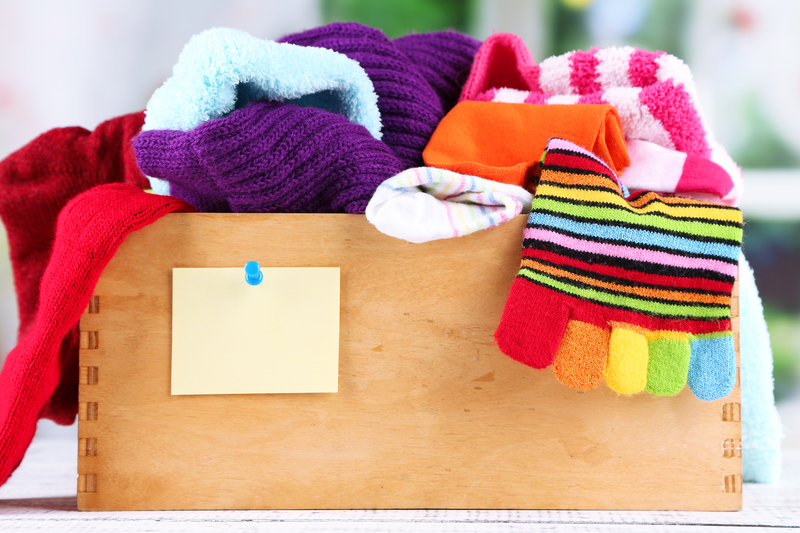Trim Your Cleaning Budget
Posted on 24/05/2025
Maintaining a clean environment, whether at home or in a business setting, is critical for health, productivity, and overall well-being. However, cleaning expenses can quickly add up, putting a strain on your budget. Fortunately, there are several efficient strategies you can employ to trim your cleaning budget without sacrificing cleanliness or quality.
1. Assess Your Cleaning Needs
The first step towards reducing cleaning expenses is to conduct a thorough assessment of your cleaning needs. Determine the areas that require regular cleaning and those that can be cleaned less frequently. Prioritize high-traffic and high-touch areas that gather dirt and germs quickly. By focusing your resources on these critical spots, you can optimize your cleaning efforts and reduce waste.

2. Invest in Quality Cleaning Supplies
While it might be tempting to buy the cheapest cleaning products on the market, investing in high-quality supplies can save you money in the long run. Quality products often last longer, require smaller quantities per use, and are more effective at getting the job done. Opt for multi-purpose cleaners that can tackle various tasks to reduce the number of different products you need to purchase.
3. DIY Cleaning Solutions
You don't always need to rely on commercial cleaning products. Many effective cleaning solutions can be made with common household ingredients. For instance, vinegar, baking soda, lemon juice, and essential oils can be combined to create non-toxic, budget-friendly cleaners. These DIY solutions are not only cost-effective but also environmentally friendly.
4. Shop for Deals and Buy in Bulk
Take advantage of sales, discounts, and bulk buying options to save money on cleaning supplies. Buying in bulk can significantly reduce the price per unit, making it a sound financial decision for non-perishable items like paper towels, trash bags, and cleaning agents. Keep an eye out for promotions and utilize coupons whenever possible.
5. Implement a Cleaning Schedule
A structured cleaning schedule ensures that tasks are done consistently, preventing bigger messes that require more time and resources to clean. Designate specific days for particular tasks and stick to the schedule to maintain a consistently clean environment. This proactive approach can help prevent urgent, last-minute cleaning jobs that often result in higher costs.
6. Train Your Staff or Family
If you're managing a business or a household with multiple members, ensure that everyone is trained in proper cleaning techniques. Proper training reduces the chances of mistakes and waste of supplies. Encourage family members or employees to clean up after themselves and complete smaller tasks, such as wiping down surfaces or emptying trash cans, to minimize the need for professional cleaning services.
7. Outsource Wisely
While doing it yourself or with the help of others can save money, there are times when outsourcing is the more cost-effective option. Evaluate your cleaning needs and identify tasks that might be more efficiently done by a professional cleaner. Compare different cleaning services and negotiate rates to ensure you're getting the best value for your money.
8. Maintain Cleaning Equipment
Proper maintenance of cleaning equipment can extend its lifespan and ensure it operates efficiently. Regularly clean and service your vacuum cleaners, washing machines, and other equipment to avoid costly repairs or replacements. Simple maintenance tasks, like changing filters and emptying vacuum bags, can improve the effectiveness of your cleaning tools and reduce long-term expenses.
Pros and Cons
Pros:
- Cost savings: Implementing budget-friendly strategies can lead to significant savings.
- Customization: Tailor cleaning solutions and schedules to your specific needs.
- Environmental benefits: Using DIY cleaners and reducing waste contributes positively to the environment.
Cons:
- Time investment: Some cost-saving measures, like making DIY cleaners or training staff, require an initial time investment.
- Learning curve: Understanding the best practices for cost-effective cleaning may take time.
- Initial costs: Investing in high-quality supplies and equipment might have a higher upfront cost.
Tips to Trim Your Cleaning Budget Further
- Repurpose items: Use old towels, t-shirts, and newspapers for cleaning tasks instead of buying new supplies.
- Energy-efficient appliances: Invest in energy-efficient cleaning appliances to save on utility bills.
- Preventive measures: Implementing preventive measures, such as using doormats, can significantly reduce the amount of cleaning required.
- Reusable items: Switch to reusable mop heads, microfiber cloths, and cleaning pads to cut down on disposable products.

Takeaways
Trimming your cleaning budget doesn't have to compromise the cleanliness or hygiene of your environment. By assessing your needs, investing in quality supplies, and implementing proactive measures, you can effectively reduce your expenses. Additionally, utilizing DIY solutions, shopping for deals, and maintaining equipment can further enhance your cost-saving efforts.
Conclusion
Balancing cleanliness with a tight budget is entirely feasible with the right strategies. By following the tips outlined in this article, you can maintain a pristine environment without breaking the bank. Remember, the key to cost-effective cleaning is a combination of smart purchasing decisions, efficient practices, and proactive maintenance. Keep these principles in mind, and you'll find that trimming your cleaning budget is not only achievable but also rewarding.

 Company name:
Company name:  Telephone:
Telephone:  Opening Hours:
Opening Hours:  Street address:
Street address:  City:
City:  E-mail:
E-mail:  Web:
Web:  Description:
Description: 







